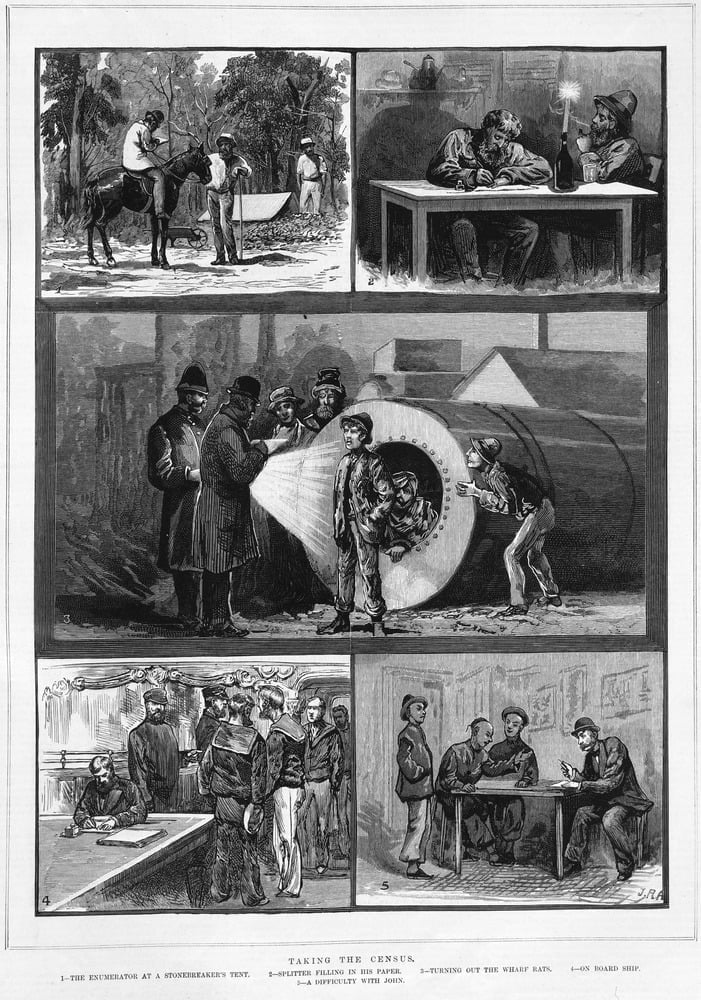
It is census year in Australia, and thus far it’s been controversial.
Most people assumed it would be paper booklets as usual, and were surprised to be sent online. Along with crashes, concern about hacking, the community worries because the Australian Bureau of Statistics (ABS) plans to keep our identifying data for four years rather than delete it when data processing is complete (after 18 months) as it has in the past. The general assumption seems to be that the government is keeping the information for nefarious surveillance purposes.
The Purpose of the Census
In fact, I have seen television interviewees declaring that they don’t know what all this research is for anyway. So, here’s my take on what it’s for and where it goes:
- The government uses it to track population growth, and theoretically at least, for planning schools, transport, and other vital infrastructure (though Government does take its time about making it all happen).
- Business and industry use it in their research and product development.
- Academics, like economists, use it to track long-term trends and forecast what might happen next.
- Historians use it to look at what life was like, and sometimes produce those fascinating documentaries where you see re-enactments of people doing stuff.
- Ordinary people use the more detailed census records of their British forebears to track their ancestry. And celebrities get to go on shows like Who Do You Think You Are while they do it. Australia does not allow general access to the identified data, but you can authorise retention of your identified data for 99 years if you want.
- And authors like me use it for researching their books, to make them as accurate and realistic as possible.
Purpose of Personal Data
People also don’t understand why their names and addresses are required. The names help you keep the information for each person in the household straight. The addresses make sure that the information from all the people in your area can be combined. The combined information ensures those schools, transport, and vital infrastructure go where they are needed. Additionally, they serve validation functions to ensure that each person and household gets counted once. Like medical research and banking records, each return gets a reference number; the return is split into identifying data and census data which are stored seperately so that the people working the census data don’t know who it belongs to.
As I mentioned, once processing is complete, the personal data is destroyed. This removes the possibility of creating new data sets that might be useful and relevant in the future. In the medical research example, this might be a follow-up study to determine whether a drug worked as well as expected. Or to invite that group of people to join a new research project looking at some relevant or newly discovered information, that their previous study involvement makes them ideally suited for.
My book Build Your Signature Wardrobe draws on census and other statistical records. They gave me the ability to give you a snapshot of what life was like in the early twentieth century. And this allowed me to show you how clothing choices changed in response to the conditions people lived in:
- How access to power took you from the physically demanding 1900 six tub wash to crank handle washing machines in the 1930s. And the to fully automatic machines in the 1950s.
- The ways that higher income led to better housing, cleaner fuel, and better food.
- Why better living conditions led to more people working and needing mass produced clothing.
My current book Holistic Personal Finance also draws on census records for background information about how people lived in the early twentieth century. At least it does at the moment; I’m not yet clear on how much of that will remain in the final version.
And one day I’d like to write a novel. If I don’t write it for another 30 years, I’ll need the data to remind me what life was like before paradox transportation units, Soylent Green style food supplements, and the latest Quantum-phone.
So Please,
make the time to complete your census fully and accurately. As soon as you think you can rely on the network not to crash. You have until September 23 to complete the online version, and September 18 to send in your paper book.
For more information check the census website.
